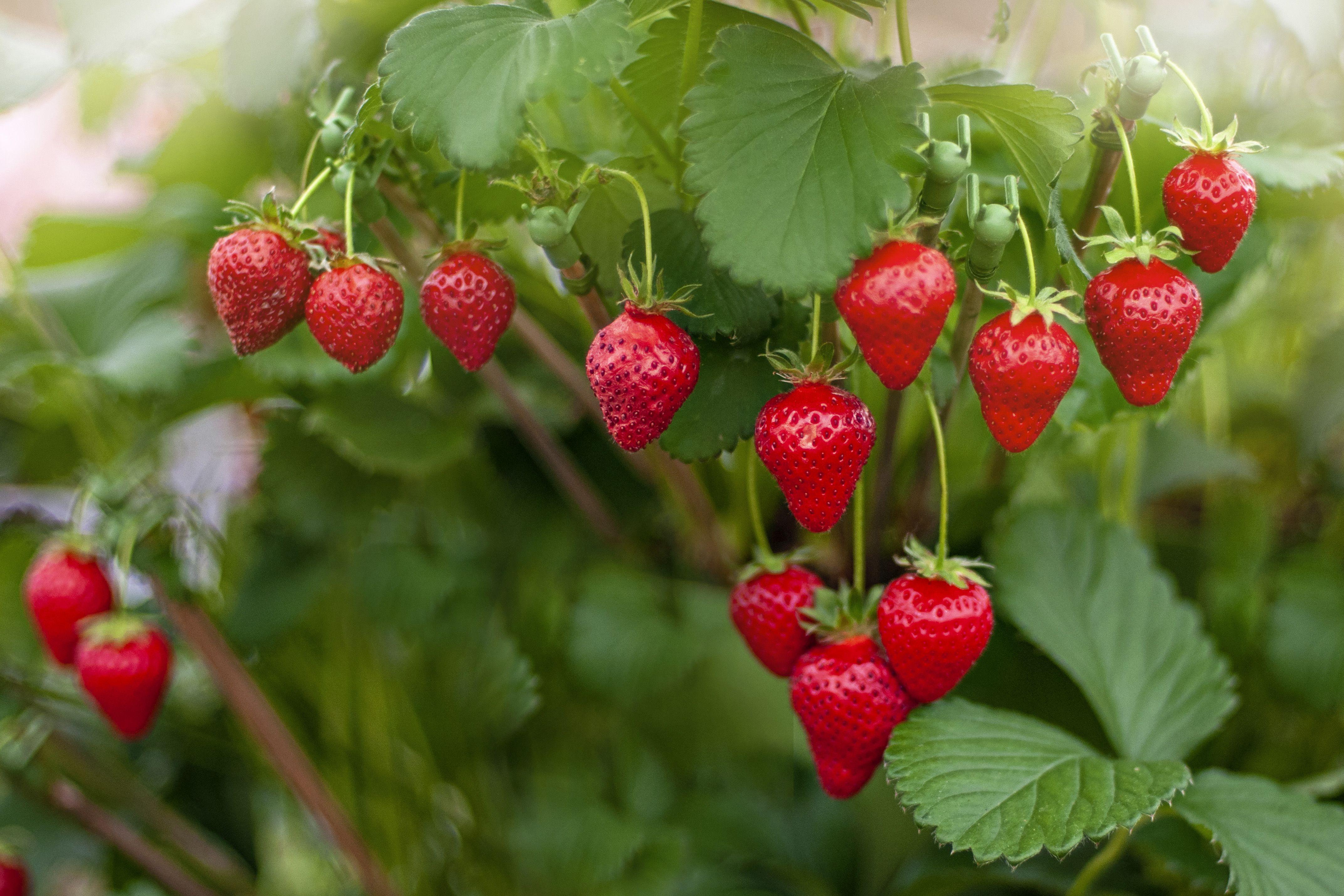Key Points
- Cultivated strawberries need at least 8 hours of full sun daily, while alpine strawberries can produce fruit in as little as 4 hours of direct sunlight.
- Yellowing leaves, stunted growth, and poor fruiting are signs your strawberry plants aren't getting enough light.
- Moving strawberry plants in too much shade to a sunnier spot will help improve fruit harvest.
Alpine strawberries produce small, sweet berries and grow in meadows and the dappled light along forest margins. Cultivated strawberries are more demanding plants that require more light to produce big harvests of large berries. Whichever type of strawberry you’re growing or how you intend to use your plants, here are some basic guidelines on how much sun strawberry plants need and how to tell if your berries need more light.
Strawberry Sun Requirements
The amount of sun strawberry plants need depends on whether they are cultivated or alpine varieties.
Cultivated Strawberries
Most of the strawberry plants at plant nurseries and garden centers are cultivated strawberries that require full sun to fruit well. Whether they’re labeled “day-neutral,” “everbearing,” or “June bearing,” these plants produce the most berries if they receive 8-10 hours of direct sun daily. However, they can fruit with as few as 6 hours of light.
Because of their high light needs, cultivated strawberry plants are best suited for sunny, south-facing garden beds and locations that taller plants and trees don’t overshadow. If you have a shadier garden, don’t despair. You may still be able to grow alpine strawberries.
Alpine Strawberries
Alpine strawberries, also known as wild strawberries, are less demanding plants that tolerate partial shade and still produce fruit. You can count on these day-neutral strawberries to produce berries even if they receive only four to six hours of sunlight daily. Keep in mind that wild strawberries naturally yield smaller and fewer berries than their cultivated cousins.
Related
Signs of Insufficient Light
Observing how sunlight moves across your garden throughout the day can help you find the best spot to plant light-loving strawberries. However, if you’re unsure whether you planted strawberries in the right spot, here are a few signs that let you know that your strawberry plants need more sun.
- Pale or yellow leaves. Plants have a harder time producing chlorophyll in low light, and their leaves may turn yellow or look washed out as a result. Nutrient deficiencies can also cause yellowing leaves; however, light-starved plants are more likely to yellow all over, while plants with deficiencies usually yellow on their oldest and youngest leaves first.
- Slowed growth and stunted plants. Once established, strawberries grow rapidly and should send out new, leafy growth within two to three weeks of planting. If your plants haven’t started to leaf out after a few weeks in your garden, they may not be receiving enough light, or their crowns may be buried too deeply.
- Poor fruiting. Strawberry plants won’t fruit well if they don’t receive enough sun. If your strawberry plants grow in too much shade, they may not fruit at all, and the plants may die back.
Transplanting Strawberries into More Sun
If you think your strawberries aren’t receiving enough light, it may be time to transplant them into a sunnier garden bed, hanging basket, or strawberry pot that can be moved to take advantage of available light.
Transplant strawberry plants as early in the growing season as possible, ideally on a day when the sky is overcast and the weather is cool, to increase the chance that the strawberry plants will fruit during the current growing season.
- Dig up the strawberry plants by loosening the soil around their roots. Then, lift the plants from the soil with a shovel, taking care to keep the roots intact.
- Prepare the new planting spot by digging a hole that’s just slightly larger than your plant’s root ball and amend the soil, if needed, with compost or aged manure. If you’re growing strawberries in pots or hanging baskets, use a well-draining potting mix and a planter that’s at least 8 inches deep by 10 inches wide for a single plant.
- Locate the strawberry plant in the hole so that the plant’s crown is slightly above the soil line. Then, backfill the hole with soil and make sure the plant’s roots are all covered.
- Water thoroughly and add a layer of mulch around the plants. Then, install a row cover or shade cloth over your newly planted strawberries. This is important as moving strawberries from shade to sun abruptly and without protection can result in sun-damaged plants with sun-scorched leaves.
- Leave the shade cloth or row covers over the transplanted strawberries for about two to three weeks. After the plants start to produce new, leafy growth, remove the covering and care for the strawberry plants as usual.
Frequently Asked Questions
-
Although strawberries are light-loving plants, they can struggle if they’re planted in locations with intense sun or moved into full sun too quickly. This can result in yellowing and browning leaves that turn crispy at the edges, and other signs of sun scorch.
-
Wild strawberries can handle partial shade, but cultivated strawberries prefer brighter light. Any strawberry plant can struggle in a full shade location.



